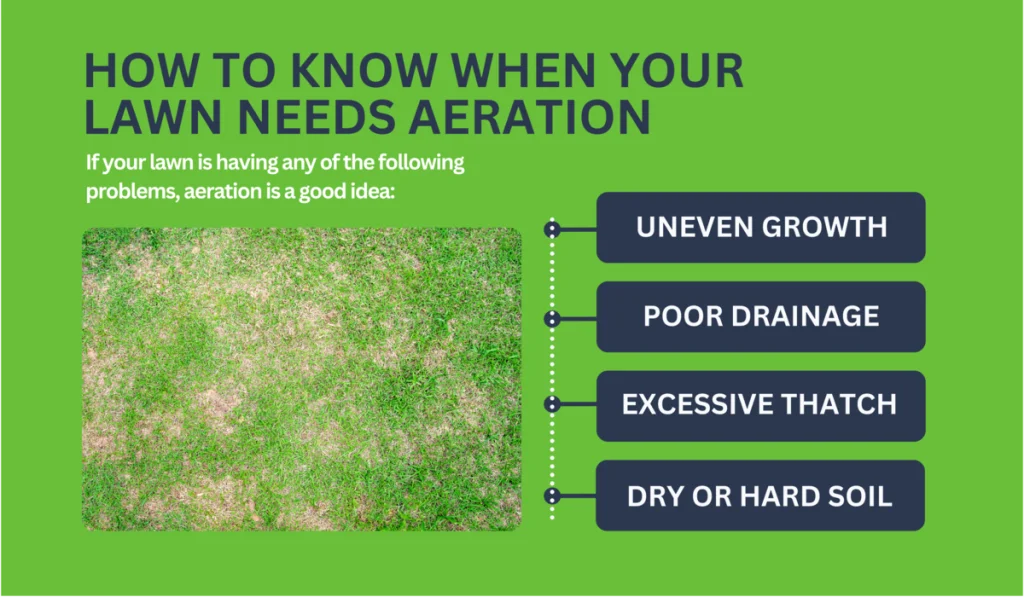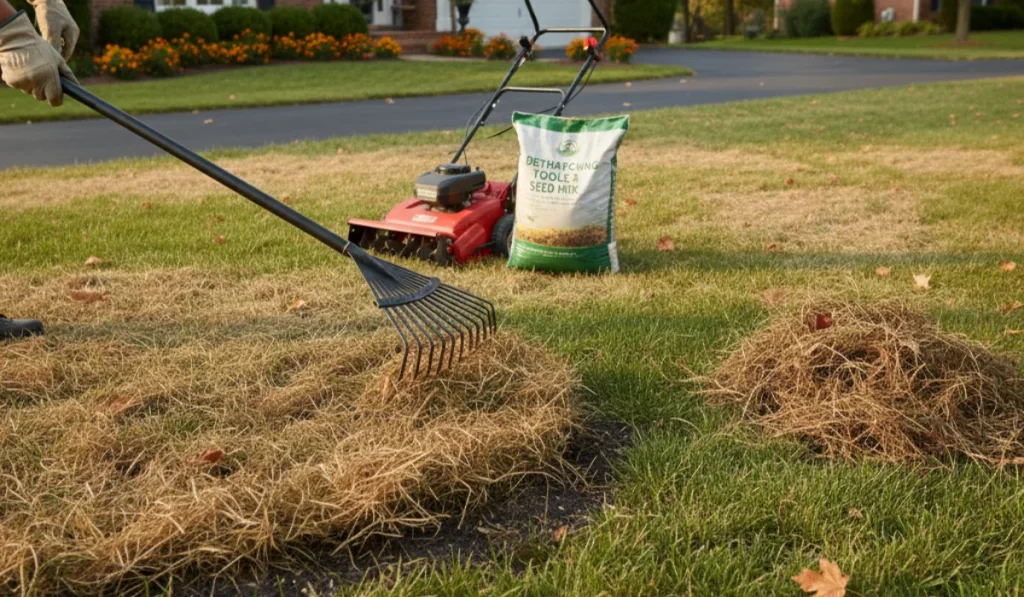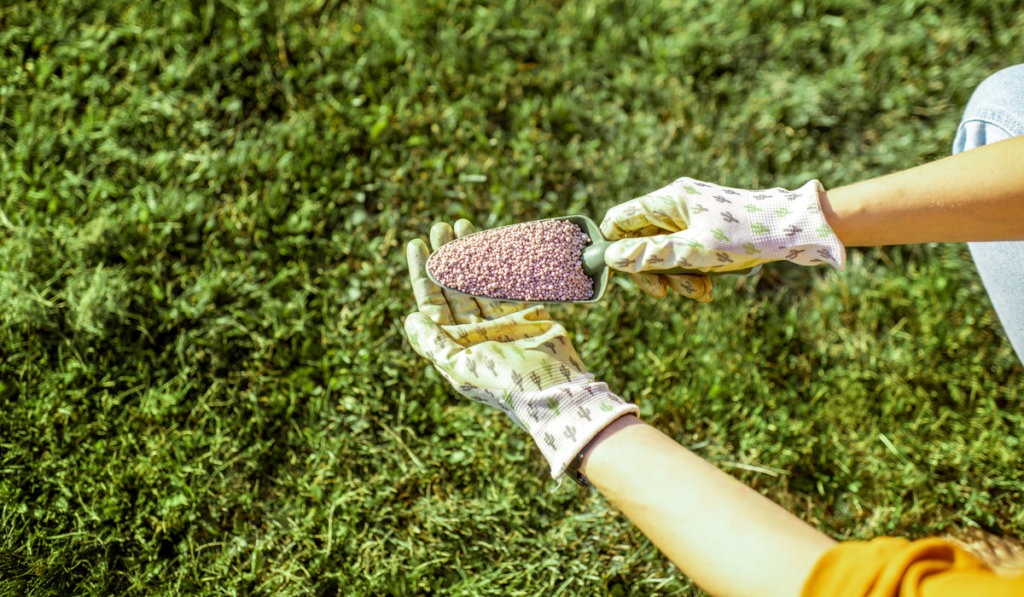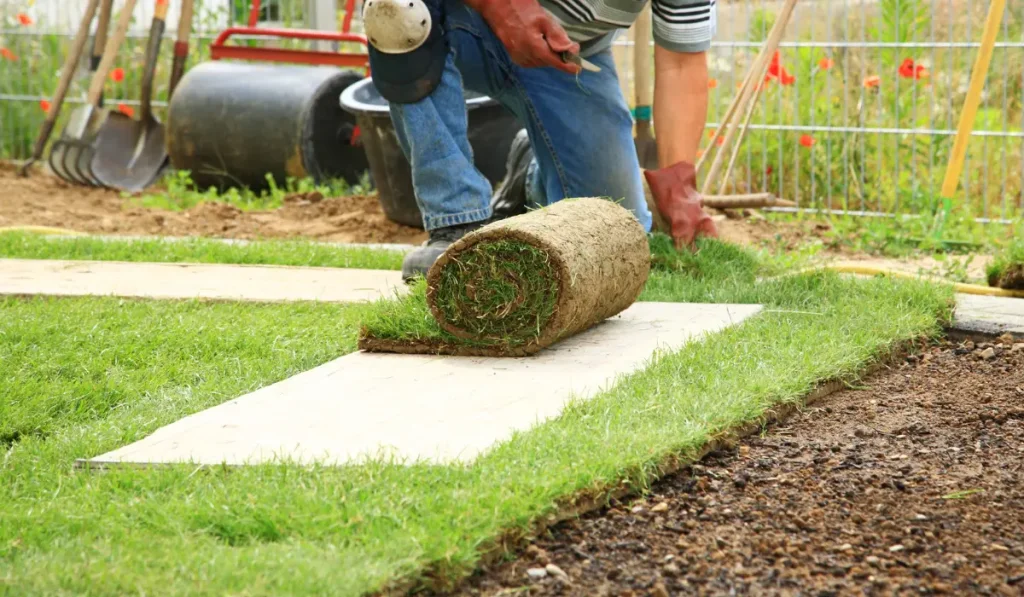Aerating your lawn is a great way to promote healthy roots and soil. When do you need to aerate your lawn in California? The answer isn’t always straightforward.
Some seasons and conditions can make lawn aeration less affected – aerate during the rainy season, for instance, and it can cause compacted soil and root damage.
That said, aeration is essential when it comes to creating and maintaining a healthy lawn. It will help the grass grow better and stronger by allowing water, air, and nutrients to penetrate deep into the soil.
Here’s what you need to know about aerating your lawn in California – and finding the best time of the year to do so.
What Is Lawn Aeration?
Lawn aeration involves penetrating the soil with small perforating holes to let water, nutrients, and air penetrate the roots of your grass. That way, your roots can grow deeply and produce a stronger, healthier lawn.
The primary goal of aeration is to reduce compaction in the soil. When soils are compacted, it can prevent the proper circulation of water, air, and nutrients. You may notice dead or dying spots on your lawn due to over-compacted soils.
Just about everyone will need to aerate their lawn at some point, but those that get heavy use or are made of clay soils will require more frequent aeration to stay healthy.
You can do several types of aeration, including spike, core, and liquid aeration. The most common type is core aeration, which uses two- to three-inch cores plugged into the ground and removed every few inches to loosen things up. It is especially ideal when working with heavily compacted lawns since it breaks up and redistributes the soil.
How Does Aeration Affect Your Lawn?
Aeration is vital for several reasons. In California, notably much of Southern California, the soil tends to become dense and hard. This is because it is often composed of clay and rock, making it challenging for grassroots to get the air, water, and nutrients they need.
Benefits Of Lawn Aeration
Lawn aeration offers several benefits.
For one, it loosens up compacted soil so that the roots of grass and other plants can access the water, oxygen, and nutrients they need. According to the Colorado State University Cooperative Extension, “Soil compaction is the primary factor limiting plant growth in urban soils.” Compacted soil can retard the ability of plants to use nutrients. Nutrients may be present in the root zone but may not be available to the plant in saturated soil, compacted soil, or soil with low biological activity. Remember, living organisms in the soil need oxygen, therefore compacted soil reduces biological activity.”
Plus, aerating can save water, meaning you’ll need to do less watering. In California’s many drought-prone areas, this is vital.
Potential Downsides of Lawn Aeration
According to most lawn care professionals, as long as you do it at the appropriate time and frequency, there are few downsides to lawn aeration.
If you opt for the core aeration method, it can leave some unattractive aeration plugs left on your lawn, making it look like a bit of a battlefield. It can also be somewhat time-consuming, and if you need to rent a machine to aerate the lawn, it can get expensive.
Otherwise, though, there are few disadvantages to aerating your lawn regularly.
How To Know When Your Lawn Needs Aeration

It can be tough to tell whether your lawn needs to be aerated or not, but it’s important to be confident in your decision to do so.
There are a few signs that your lawn is in desperate need of aeration.
One is if your lawn is hiding excess water runoff. This is a sign that water is having trouble penetrating through the soil surface.
Another key indicator is if your turf grass simply doesn’t look its best. If there are multiple dead grass spots or the grass is looking a bit on the ragged side, aeration could be just what the doctor ordered.
If your lawn is having any of the following problems, aeration is a good idea:
- Uneven growth – bare patches, especially those where even weeds cannot grow, indicate poor-quality or compacted soil
- Poor drainage – rainwater and irrigation often pool in low areas of the lawn when they can’t get through compacted soil
- Excessive thatch – if thatch is more than half an inch thick, it’s time to aerate
- Dry or hard soil – if your lawn constantly feels bone dry and dense to the touch, aeration can help
If you’re still not sure whether your lawn needs aeration, go ahead and cut out a small piece of sod. Take a close look at the roots. If it has underdeveloped or shallow roots, that’s a clear sign that it needs to be aerated.
Finally, if your lawn regularly receives high traffic, you should plan to aerate more often. Even if it does not exhibit any of the signs listed above yet, if your lawn is regularly trampled by things like pets, children, or even heavy equipment such as riding mowers, you may want to plan for an aeration session soon.
Time Of Year Aeration Should Be Done
The best time to aerate is during the growing season when your grass can heal and fill in any open areas once soil plugs are removed.
In most parts of California, the best time to aerate tends to be in the late summer to mid-fall months, ideally September or October.
While the grass will likely still be actively growing, there’s a strong chance that the foot traffic on your lawn has slowed down a bit – you’re probably hosting fewer backyard barbecues now than you were in the middle of summer, after all. Fall aeration can help get your lawn strong and healthy again after a busy season of use.
Summer tends to herald a great deal of foot traffic and activity on your lawn, something that contributes to heavily compacted soil and makes it more difficult for nutrients, water, and oxygen to reach your plants.
Ultimately, deciding the time of year to aerate your lawn will depend primarily on what type of grass you are growing.
Aerate in the early spring or early fall if you are growing cool-season grass, like bluegrass, fescue, or ryegrass. If you live in places like the Pacific Northwest, Northern California, or any other part of the region that experiences cold winters and hot summers, you’re likely growing a cool-season blend.
However, if you’re growing warm-season grass, like Bermuda or St. Augustine, the best time to aerate will be in the late spring or early summer. If you live in a hotter climate where temperature swings aren’t that drastic between seasons, you’re likely dealing with a warm-season type of grass.
How Often You Should Aerate Your Lawn
Knowing the right time of year to aerate your lawn is important, but you also need to nail the frequency of aeration too.
Try to aerate at least once or twice a year for a lawn that experiences high traffic or has clay soil. This type of soil will be more prone to compaction.
If your lawn receives moderate traffic and is composed of loam or silty soil, aerating just once a year is perfectly fine.
And if your lawn receives minimal traffic and has sandy soil, you probably don’t need to aerate every year. It seldom compacts, so aerating once every two to three years is sufficient.
If you can, try to time your aeration based on other lawn-care tasks. Aerate your lawn before applying herbicides and overseeding. This will increase the effectiveness of both your seeding and your weed control efforts.
Similarly, it’s a good idea to aerate before fertilizing and to water within 48 hours after aerating. During the first two to four weeks after aerating, try not to mow. You need to give the grass some time to recover!
Can You Aerate Your Lawn Too Much?
Aeration is excellent for your grass, but you can certainly make the case of too much of a good thing here. Core aeration, in particular, can cause a lot of damage in the process. You need to give your grass time to recover from that damage and make repairs.
While the benefits of aeration dramatically outweigh the risks, you should avoid aerating too often.
Regardless of how often you aerate your lawn, make sure you aren’t doing it when the weather is extremely hot or dry. Punching holes in the soil can expose it to more heat, which can dry out your grass and stress it even more.
Conclusion
The right time to aerate your lawn in California will be determined by various factors, like what kind of grass you are growing and what type of soil you have. Ultimately, the most important thing to remember is that aeration is essential regardless of when you do it! Follow the tips above for surefire success every time.
Need Sod in California?
Get the lawn of your dreams today
See which sod varieties are available in your area and get pricing.
See whats available. Get an instant Quote
We service most of California, including:
Los Angeles
San Diego
Fresno
Bakersfield
Long Beach
Anaheim
San Francisco
San Jose
Sacramento
And much more!



